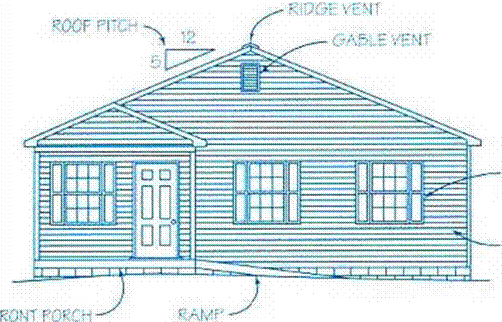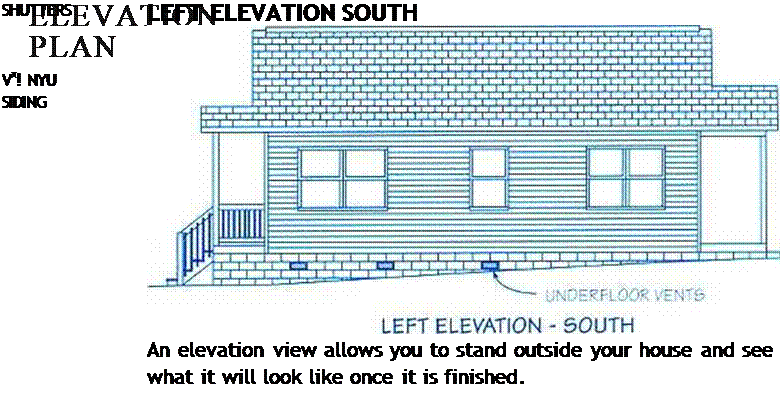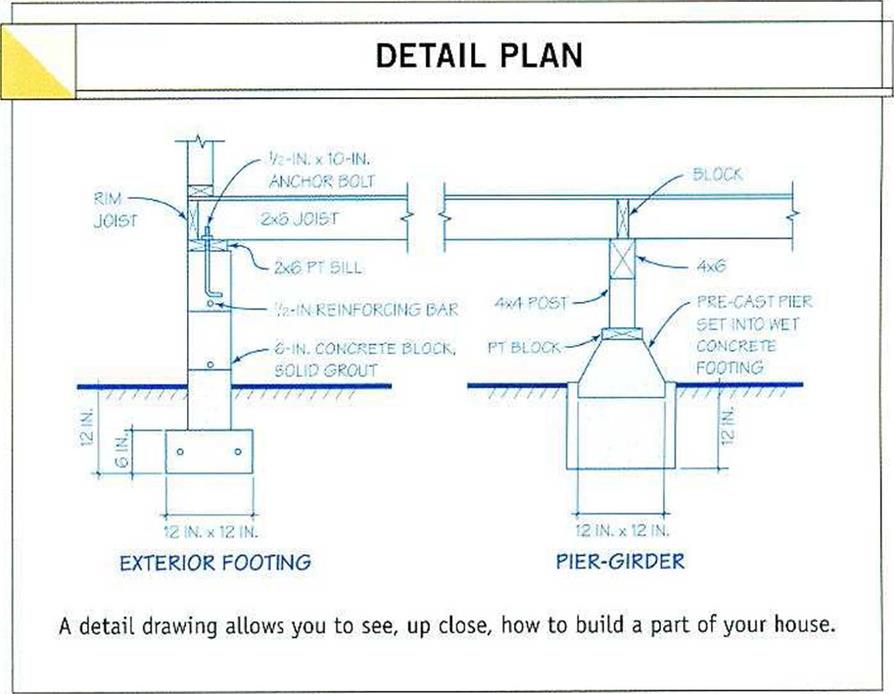If you can draw it, you can build it
If you’re drawing your own plans, the process— though slow and often frustrating—will give you a clearer understanding of your house than many builders ever have. It can save vou from making costly mistakes and will likely contribute to building a better house.
A good wav to test vour ability to visualize a house design based on plans is to visit some building sites where vou can examine both the plans and the actual construction details as the house goes up. If you’ve bought stock plans, they may seem bewildering initially; as you work with them, they’ll become much easier to read and understand. The ability to both draw and read plans gets easier with experience.
 |
 |
FRONT ELEVATION EAST
Building a house is a process that consists of a seemingly endless number of steps. Knowing which step follows which—for example» when to call the electrical company 😮 install a temporary power pole, when to call the plumber to install drains and vents in the joist system— is key to organizing tasks and materials so that work isn’t held up. This knowledge comes primarily from experience, but for the firsttime builder I’ve listed most of the steps in the process (see pp. 16-21).
 When my brothers and 1 were building houses, we spent many hours planning and organizing so that we always knew what to do next, who would do it, and when and how it would be done. Organizing time and materials is an essential skill for any builder, whether that builder is working with professionals, friends, family, or Habitat volunteers. Staying organized and on top of the situation is especially important when working with volunteers and unskilled helpers. Careful planning, good organization, and effective communication will
When my brothers and 1 were building houses, we spent many hours planning and organizing so that we always knew what to do next, who would do it, and when and how it would be done. Organizing time and materials is an essential skill for any builder, whether that builder is working with professionals, friends, family, or Habitat volunteers. Staying organized and on top of the situation is especially important when working with volunteers and unskilled helpers. Careful planning, good organization, and effective communication will






Leave a reply